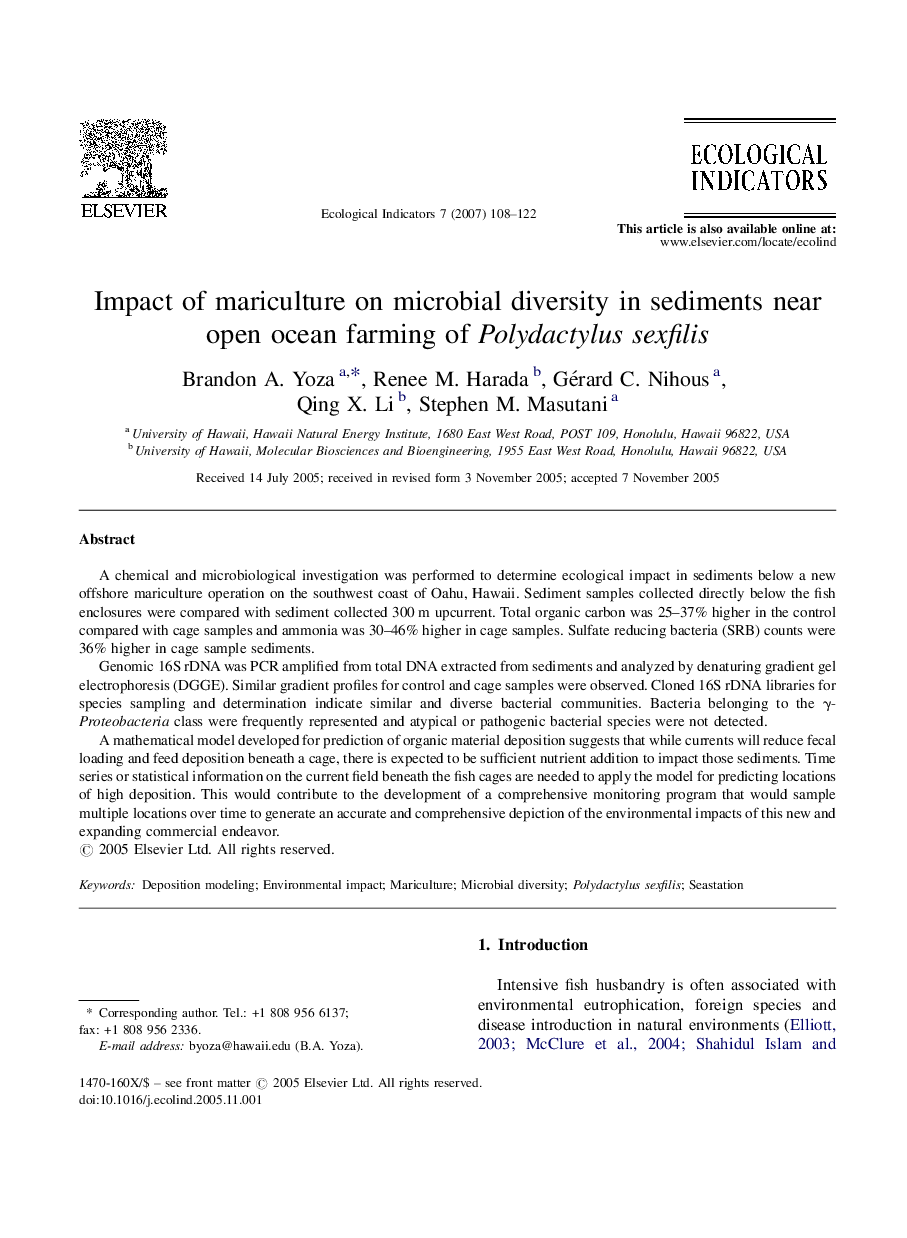| Article ID | Journal | Published Year | Pages | File Type |
|---|---|---|---|---|
| 4374642 | Ecological Indicators | 2007 | 15 Pages |
A chemical and microbiological investigation was performed to determine ecological impact in sediments below a new offshore mariculture operation on the southwest coast of Oahu, Hawaii. Sediment samples collected directly below the fish enclosures were compared with sediment collected 300 m upcurrent. Total organic carbon was 25–37% higher in the control compared with cage samples and ammonia was 30–46% higher in cage samples. Sulfate reducing bacteria (SRB) counts were 36% higher in cage sample sediments.Genomic 16S rDNA was PCR amplified from total DNA extracted from sediments and analyzed by denaturing gradient gel electrophoresis (DGGE). Similar gradient profiles for control and cage samples were observed. Cloned 16S rDNA libraries for species sampling and determination indicate similar and diverse bacterial communities. Bacteria belonging to the γ-Proteobacteria class were frequently represented and atypical or pathogenic bacterial species were not detected.A mathematical model developed for prediction of organic material deposition suggests that while currents will reduce fecal loading and feed deposition beneath a cage, there is expected to be sufficient nutrient addition to impact those sediments. Time series or statistical information on the current field beneath the fish cages are needed to apply the model for predicting locations of high deposition. This would contribute to the development of a comprehensive monitoring program that would sample multiple locations over time to generate an accurate and comprehensive depiction of the environmental impacts of this new and expanding commercial endeavor.
